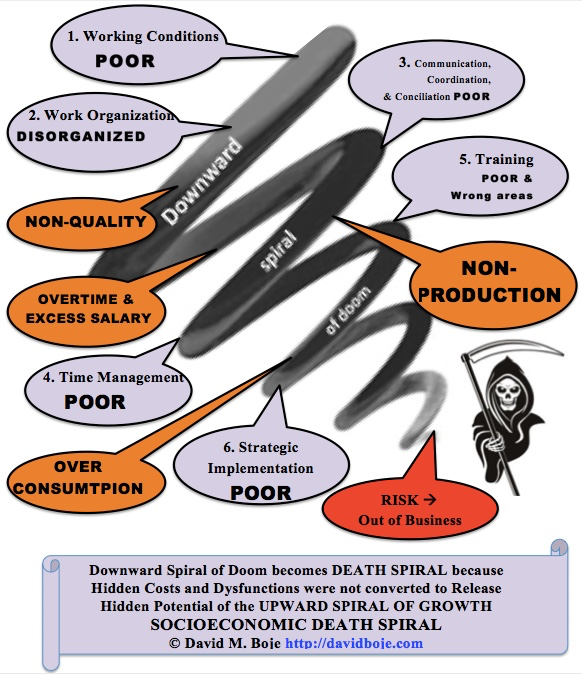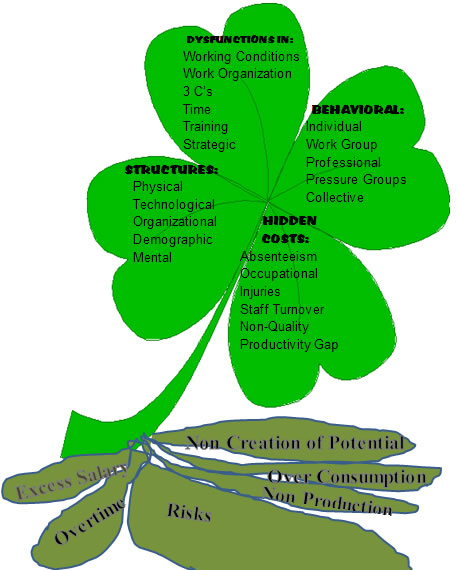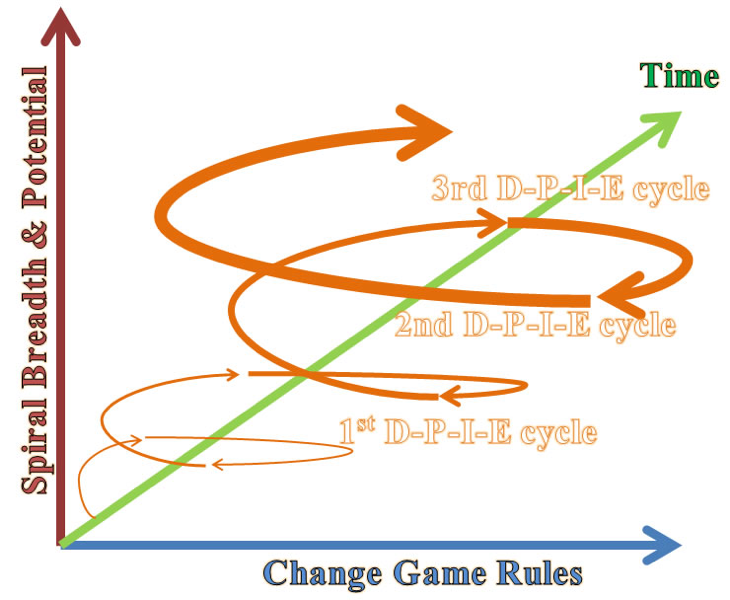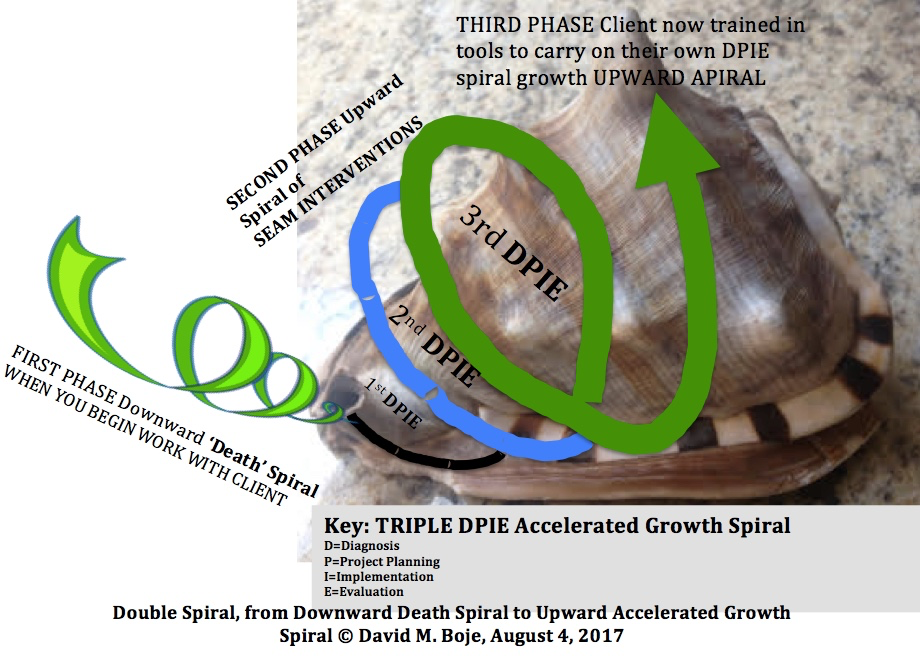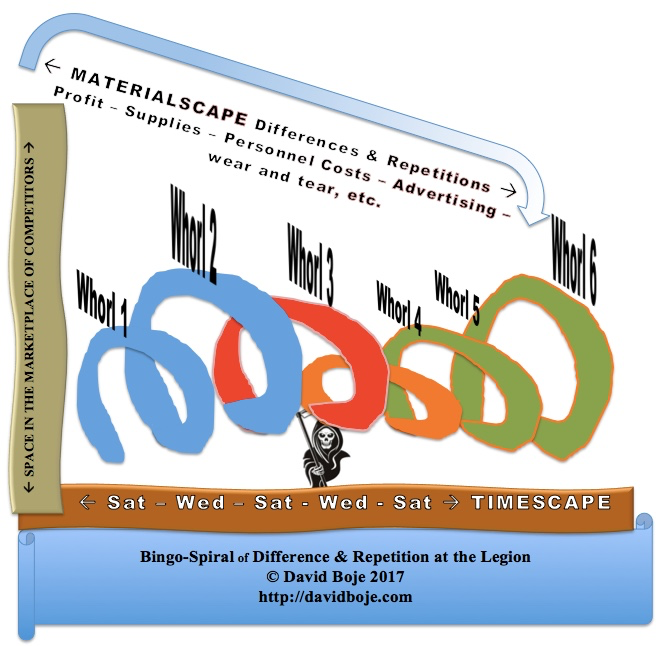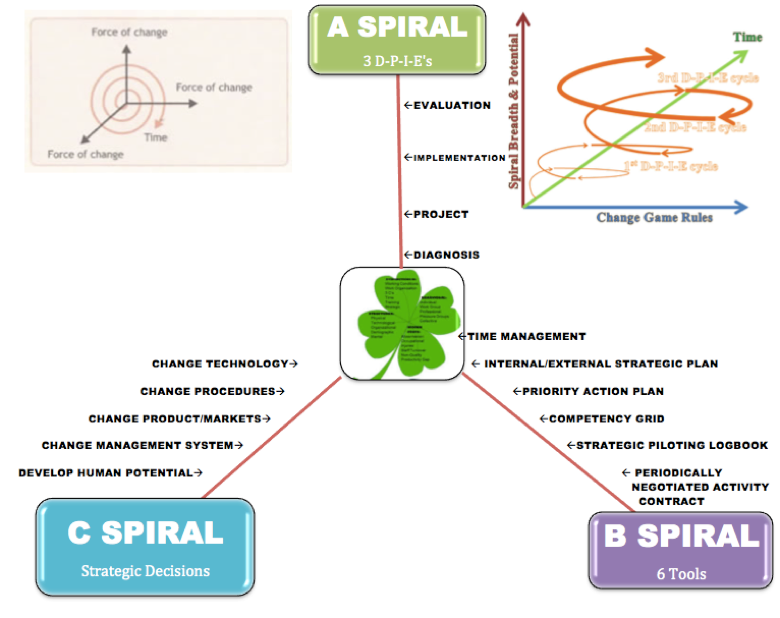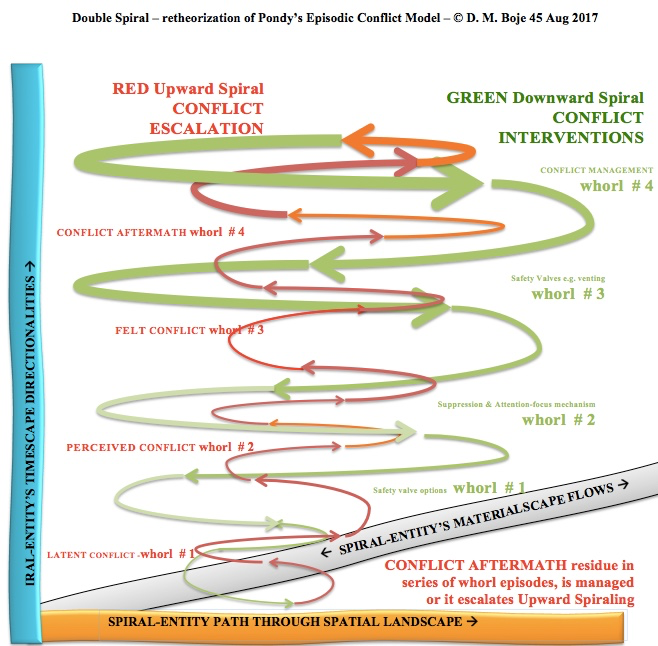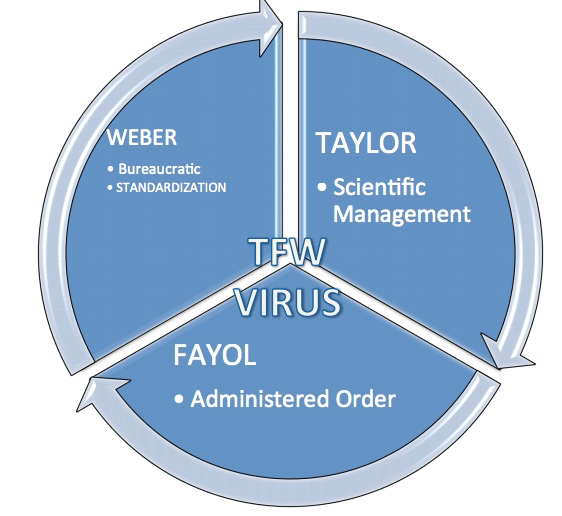How this course teaches you small business consulting?
You will work as team of student consultants to actual businesses (or some non-business organization). There are no quizzes, no multiple choice exams (see Grading). You are adults, so you can keep track of your own participation slips (we give out for you getting involved in class), and track your grades on homework(submitting all graded ones at FINAL), and instructor records daily attendance. If you were expecting multiple choice quizzes or not coming to every class event, then please drop course now. Our learning is experiential, in class, and include you doing out of class visits almost weekly with your small business client. There is homework to teach you the method by you answering a couple of questions and bringing them to class printed, the following week. Class meets once a week, and each week a student team co-facilitates with instructors by developing a lesson plan. Bottom line this is one of those classes where its all about showing up to class.
Learning Objective: Our learning objective is simple: learn to listen to client, separate the surface issues they hand you as 'what they want' from 'deep rooted causes', and learn how to develop 3 small projects with the client that have a huge momentum of change from downward 'death spiral' of accumulated dysfunctions to implementing a healthy upward spiral impact by actually transforming (transmuting) the death spiral dysfunctions into upward spiral revenue resources. This objective combines Boje's teachings on double spiral approaches with the Socio-Economic Approach to Managing (SEAM). We are one of two universities in the United States that has permission to teach SEAM method. We are the only business college in world doing spiral consulting!
Stay or go? Looking for quick fix consulting class, this is not for you. If you thought small business consulting was reading a case and doing a write up, then this course is not for you. If, on the other hand, you want to learn what keeps a family business or any small business s on path to upward spiral of success then please stay enrolled.
Figure 1 - Queen Conch Spiral with 3 Right Hand Whorls, of Organic Matrix Growth (photo by Boje, 5 August, 2017)
Help your client organization find their Conch spiral of success. This Queen Conch is caring for its future, building its ekoskeleton, whorl-by-whorl, in mattering layers secreted into an organic matrix (shell) resistant to abrasion, with a smooth inner layer. In your small business consulting, you co-create spirally-growth, whorl-by-whorl. The spirally coil shell gets larger (left-to-right), coiling about its axis in the shape of a growing generating spiral curve. Your challenge is to help the client find ontologic growth changes in the body whorl, helping the business to move forward, one whorl at a time, in its socioeconomic environment.
This course is about reversing the 'death spiral' of family and small business. The death spiral is not knowing where you are, and not adjusting your course. "What you really need to know is that about 20% of small businesses fail in their first year, and 50% of small businesses fail in their fifth year" (source). Forbes gives 5 reasons for business failure. In accounting, "the term death spiral refers to the repeated elimination of products resulting from spreading costs on the basis of volume instead of their root causes. Here we focus on more than accounting. We look at the socioeconomic approach to management (SEAM) to keep the business 'agile.' Here is my rendition of downward 'death' spiral.
Figure 2 - The death spiral from socioeconomic view© David Boje Aug 6, 2017
The small business 'death spiral' when the socioeconomic situation is no longer beeing managed, and the dysfunctions go unattended, and the 'hidden costs' become critical financial sources of disaster. These are 'hidden costs' because they are not being picked up in the regular acocunting reports management receives, and without heavy investment in activity based accounting, you don't know what hit you. You can also assess the "downward demand spiral" (source).
I have been studying the ways to reverse the death spiral of family business with Ivan and Mariana. I recommend their new book (stay tuned). They got me started on intergenerational family business success spirals to offset the business death spiral. It's risky out there: More American Businesses Dying Than Starting (source). See Death Spiral of Small Business (source)
There are also upward spirals, and you can create them at anytime.
SPIRALS: How to change Death Spiral into Growth Spiral
OK, so as a student consultant your mission is to diagnose whatever downward spiral (dysfunctions, hidden costs, stem roots) is happening (hopefully, not a full on death spiral), then figure out how to develop upward spiral momentum. This is done by diagnosis using 4-leaf clover, then developing Diagnosis-Project Planning-Implementation-Evaluation whorls, three of them, to build upward spiraling momentum
Figure 3 - 4-Leaf Clover DIAGNOSTIC MODEL (also part of DPIE) shown with the 6 INVISIBLE ROOT STEMS your consulting with the client is to disclose and reveal by doing Dysfunctions and Hidden Cost analysis
PRINCIPLE 2: The worst consultants work on the symptoms of the problem. The best consultants dig deep into the financial 'root stems' beneath the hidden costs.
PRINCIPLE 3: Upward Spiral momentum is generated and accelerated by doing 3 Diagnosis-Project-Implementation-Evaluation (DPIEs), one after the other, building upon one another.
Here is an example of combining 3 DPIE loops (also known as whorls). This does not get you out of death spiral. Keep reading for that answer.
Figure 4 - the 3 DPIEs you will implement with client to build upward spiral momentum. Its called the B-Spiral in our course model (Drawing by Boje, in several publications, e.g. Boje, 2016; Henderson & Boje, 2016, ©)
Figure 5: Using Triple DPIE Accelerated Growth Spiral interventions to get out of Client Organization's Death Spiral (© copyright D. M. Boje, Aug. 5, 2017)
Most of you will have a semester that look like this downward death spiral of dysfunctions in need of creating a 'Queen Conch'. The Queen Conch (above) is a sea snail with spirally constructed shell. You need to learn some shell morphology, and how the Queen Conch propels forward in a leaping motion to seek food, and can bury itself in a burrowing motion, to protect against predators. My point is that the Triple DPIE you co-create with your client, gives the organization movement in its environment. You enter the client's 'Death Spiral' of accumulated dysfunctions, hidden costs, and conflicts are escalating (maybe manifest outbreaks). Co-construct an organic matrix whorl-by-whorl, one DPIE at a time, until a Spirally Coiled rate of growth takes on momentum. The rate of growth per whorl (each DPIE) is around a coiling axis, in shape of a generating spiral curve that has 'ontologic growth changes' as the small business reaches socioeconomic health. Then you do you 1st DPIE (whorl) and get a little movement, then your 2nd (whorl) gets a bigger upward spiraling, and you top it off with the 3d DPIE (whorl). Think of 3 momentum growth phases. Phase 1: you encounter and document all the dysfunctions (enter Death Spiral (if its there)). In Phase 2, co-construct with the client (never for them), 3 DPIES in a succession, building one one another (not 3 objectives, you pre-design at git-go, that won't do the turnaround). Then in 3rd Phase you leave the client prepared to carry out their own DPIE, because the know the tools (Spiral B) and they have made Strategy moves (Spiral C).
The single (up or down) spiral models don't cut it. There is no morphology, no co-construction of the body shell, no locomotion. There has to be force and counterforce, an opposition. Besides, what I call double spirals do not sit still, their upward and downward spiraling force exist in a context where there is movement across spacetimemattering.
This next example is about Bingo, and shows difference between doing an over-simplified Spiral and one that has three demensions, and substantive content, and movement.
Read entire report on Bingo-Spiral
Do not do single line spiral drawings. And please do not do them without annotations and dimensions
Figure 6: DON'T DO THIS" A Too Simplistic Spiral-Line of Bingo at the Legion
This spiral-line figure is too simplistic to tell us what is important about difference and repetition of the bingo events and their relationship to the mission of being an business that controlls hidden costs and develops revenue potention.
INSTEAD PLEASE DO SOMETHING LIKE THE FOLLOWING
Figure 7: The Bingo-Spirals has Saturday & Wednesday WHORLS of different REPETITION proportion and substantive DIFFERENCE (© D. M. Boje 2017)
GOOD OVERVIEW: Read entire report on Bingo-Spiral
How to draw a great spiral:
Draw this in Word (use curvy line to shape it, then add fill)
then copy it with smaller or larger size
,
Then you change the ordering, so they overlap to create spiral effect (can also change their colors as in Bingo-Spiral example above. Great to add annotations in textbox (as above, Whorl 1, 2, and 3, use tilting effect in Word, to get above effect), you can add interesting figures, like the Reaper. I look forward to your amazing Spiral drawings!
Tell the spiraling story of the Agile business. Here is an example:
My Essay on Bingo-Spiral (some excerpts): Spirals have repetitions of the whorls (2 Bingo events a week) and differences (between whorls, some larger, others smaller) in three dimensions. Above I show five whorls of a dynamic spiral that has the dimensions of space in marketplace (landscape), time in a timescape, and materials in a materialscape. The three dimensions are inseparable, but let’s pretend we can tell them apart (Read entire report on Bingo-Spiral):
- SPACE (Landscape) IN THE MARKETPLACE OF COMPETITORS - St. Genevieve has the same $1,199 blackout as the Legion; Elks’ blackout is $800’; Three Crosses blackout is $700. There is also market space for Knights of Columbus and Tortugas (Mesilla). Legion is vying for top market share in the Landscape.
- TIMESCAPE – Sunday and Wednesday events all year round, and the preparation for the events, the managing of the events. Johnny and Clint start work at noon and leave at 9PM (or later), and then put in about 5 or more additional hours doing accounting, supply runs, and passing out flyers to boost attendance. They supervise 3 cashiers (none of whom are Legion members), 1 caller (not Legion), 4 cleaners working to empty baskets from each table 4 times each evening (1 is Legion), and 4 food people (none are Legion).
- MATERIALSCAPE – Material things like money, supplies, utilities, the hall, tables, chairs, and bodies (workers, managers, caller, clean up crew, food crew, Legionnaires there and not there, and customers there and not there), and any profit once bills are paid. A sizeable number of customers are families, some with children. Bingo materiality is not just the elderly. About 12 players are handicapped, and have reserved places in the materialscape of other players. I think if you counted the number of Johnny’s and Clint’s relatives, playing, it’s what keeps attendance excelling.
It’s all about repetition and difference: The whorls occur in repetition but the whorls are each full of difference. Spiral is a concept, a representation of the shape and form of the whorls. Spiral is also an Idea, what and how it does ‘difference and repetition’ of the spiral happen? Concept and Idea of spiral are not independent, and do interact. To manage and organize Bingo you have to understand the concept of spirals. And you also have a really good Idea of how whorls are repetitions of the event twice a week that can be quite different if you know what to observe.
Making a Difference is Opposed by Overcoming Indifference: There are two types of indifference among our Legion members. Type one is the Abyss of Legionnaires who will have nothing at all to do with bingo. You hear them saying “I hate bingo” or “I never play bingo” or “I have nothing to do with bingo.” Type two indifference is the scattered Legion members who only see the calm waters of bingo events, pay some lip service to bingo being important to fund the Legion’s other events and keep the hall open, but are no less indifferent than Type one.
Read rest of Boje's entire essay on Bingo-Spiral
Here is a another way to do spirls, and its your class model of multiple spiral paths:
Figure 8: COURSE MODEL - The first THREE Spirals of Socioeconomic Development Revolving around 4 Leaf-Clover Diagnosis
PRINCIPLE 4: First 3 Spirals, A (3 DPIEs), B (6 Tools), and C (Strategic Decisions) form the basic TRIPLE SPIRAL, which revolves around the 4-Leaf Clover model at the center
D-SPIRAL
Here we introduce the fourth spiral of small business consulting, the D-spiral, and the E-spiral, the 23 steps you follow as a student consultant to do your interventions and write up the report (called LOGBOOK) to give to client and instructors.
Figure 9: COURSE ROADMAP - This is the way the 23 steps work, The steps spiral through the FOUR A-B-C-D spiral arms, one step at a time in the E-spiral that winds out from the center to outer edges (source © Boje, 2012, )
Its not about moving from one spiral into another, its about the double spiral moving in spacetime and finding a superior sociomaterial location in the market and industry. The Double Spiral (B) is the DPIE (Diagnosis, Project planning, Implementation, and Evaluation) is done 3 times during the semester to build the downward spiral flushing out of hidden costs you convert into savings to generate upward spiral momentum whorls of revenue potential creation in the small business. This 3 DPIEs is called the A-Spiral This next figure shows the second principle, called 'double spiral'.
Figure 10: Double Spiral of upward and downward movement which allows movement of the business in the spatial landscape (geographic, market share, etc.), the timescape (future, present, past), and the materialscape (equipment, tools, technologies, etc.).
PRINCIPLE 5: The Double Spiral of flushing out Hidden Cost Downward Spiral converting savings to the Upward Spiral of revenue generation 3 DPIEs (A-Spiral) requires teaching your client tools (B-Spiral) and working with them to change their Strategy (C-Spiral).
The three dimensions form the space (landscape) timescape, and materialscape. Part of this principle is the inseparability of space, time, and materiality that is called spacetimemattering. We implement 6 tool with (not for) the client along the B-Spiral. You will have three MIRROR EFFECT meetings showing the client the hidden costs and untapped revenues that can come with the implementation of the first or next DPIE (3 in all). Here are first three spirals A, B, and C.
Figure 11: The TFW Virus system infection OPPOSED by SEAM system interventions
In the AGILE book, you will learn:
- Most change models use traditional design principles that assume stability and do not have a SPIRAL UP. Instead they turn in place without changing and growing.
- Most organizational change system models are inefficient, static representations, and cannot achieve more than average socioeconomic performance.
- SEAM attacks the TFW virus (see. p. 23 AGILE book). SEAM, by contrast, makes improvements in low value added tasks by transmuting dysfunctions and hidden costs of managing them, into revenue generating economic performance.
- SEAM argues "that systems infected with the TFW virus cannot develop the ability to sontaneously adapt to their environment" (AGILE, p. 29).
- In sum, SEAM is an open system that includes not just socio-technical-system, but the economic and accounting open system ways of "converting dysfunctions resulting from the TFW virus into value-added work of transforming low-value-added activities into high value-added activity, and of liberation of socioeconomic performance" (AGILE, p. 31).

